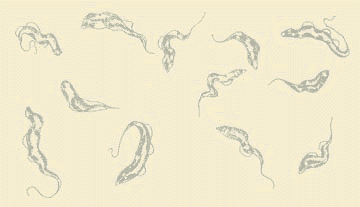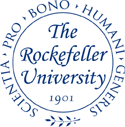

 |
 |
|||
| Pedigrees of some Trypanosoma brucei strains in common use and an index of Lister 427 VSGs | |||||
| Trypanosoma brucei strains in common use are sometimes erroneously referenced in the literature, and the byzantine nomenclature system that many use and misuse without understanding it often disguises the relationships among different samples that actually had a common origin (I will write an essay on this at a later date). To try to clarify their origins and propagation, I have exhumed, from original records provided to me (some of them long ago but usually definitive) and from other sources, the best information that can be compiled on the pedigrees (lineages) of various strains in use in various laboratories. This is information that does not appear to have been brought together in any other place, and should possibly be published in one of the standard journals once it is complete and verified. I hope others will inform me about any errors or discrepancies. There are gaps in some of the lineages that I hope others will be able to fill, so these files will be updated whenever necessary. The charts were assembled using Omnigraffle (except for Lister 427, which is part of a larger history) and are provided in pdf format. | |||||
| A list of characterized Lister 427 VSGs with the preferred nomenclature cross-referenced to MITat designations, lab-specific names and GenBank Accession numbers, can be viewed here in (Microsoft-generated) html with active links to sequences or downloaded as pdf without active sequence links. Please e-mail me if you have sequenced a new VSG that we should add to the list. | |||||
Lister 427 This lineage also includes details of the original s427 (sheep 427) strain, which is almost certainly T.b. rhodesiense and is NOT the commonly used '427' strain, which we nowdesignate 'Lister 427', because this is as far back as its origins can be traced. Possibly because of its wide use and different pathways of distribution as both procyclic and bloodstream forms, this strain sometimes has been incorrectly referred to in the literature as EATRO 427, LUMP 427 and s427. A more detailed exposition of the origins and history of Lister 427 is in preparation (it has been almost finished for a long time). The main point is that I have been unable to definitively identify its original source but we are pretty sure that it was passaged extensively in mice before we obtained it and that it is not human-infective, so it could probably truly be called Trypanosoma brucei brucei (as it has been in many publications from other laboratories), although I prefer not to do that until we completely understand the genetic mechanisms of human infectivity in the African trypanosomes and have incontrovertible evidence that Lister 427 does not possess the genetic potential to become infective to humans. On the other hand, this strain has been widely used and occasionally self-injected without any evidence of human infectivity. One issue that has remained contentious for many years, despite the documentation of personal communications from several sources, is 'is Lister 427 transmissible through Glossina?'. The various occasions on which this has been achieved are documented in the commentary in preparation and summarized in the pedigree that can be downloaded below. Perhaps doubters will be convinced be the 2008 publication from Wendy Gibson's lab (2008: Fly transmission and mating of Trypanosoma brucei brucei strain 427. Peacock L, Ferris V, Bailey M & Gibson W. Mol Biochem Parasitol 160:100-6. DOI PMC URL PMID). If you are uncertain about the veracity of 427 strains in your laboratory, the Seebeck lab has identified a quick method to check if they are the real Lister 427 (2009: Gene conversion transfers the GAF-A domain of phosphodiesterase TbrPDEB1 to one allele of TbrPDEB2 of Trypanosoma brucei. Kunz S, Luginbuehl E & Seebeck T. PLoS Negl Trop Dis 3:e455. DOI URL) TREU 927 the GENOME strain (also used in genetic crosses) EATRO 795 and derivatives (ILTat lines derived via LUMP 227) AnTat1 serodeme (Antat 1.1 and Antat 1.8) STIB 247 (used in genetic crosses) STIB 386 (used in genetic crosses) | |||||